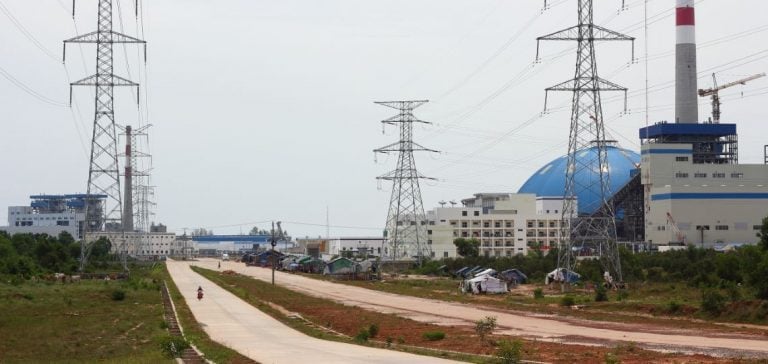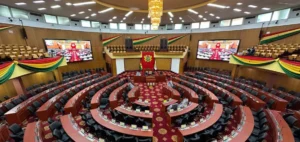Cambodia is set to increase its electricity import capacity by more than 50% over the next two years, supported by energy agreements with Laos, Vietnam, and Thailand. This initiative aligns with the country’s broader efforts to diversify energy sources, improve energy security, and reduce its dependence on fossil fuels. The decision comes amid rising electricity demand and concerns about the reliability of national power generation, particularly in light of climate challenges affecting hydropower production.
New agreements with Laos, Vietnam, and Thailand
Cambodia’s Energy Minister, Keo Rottanak, announced plans to import more than 600 megawatts (MW) of solar and hydroelectric power from neighboring countries. These imports include 300 MW from Laos, combining hydroelectric and solar power, scheduled to start in 2026. Additionally, a previous agreement with Vietnam will be doubled, adding nearly 300 MW, which is currently in the final approval stage. Negotiations are also ongoing to potentially import an additional 100 MW from Thailand. These imports will increase Cambodia’s contracted import capacity by more than 50% from the current 1,030 MW, further strengthening the country’s energy supply with renewable resources.
Impact on Cambodia’s energy mix
Currently, Cambodia imports about 1,030 MW of electricity from Laos, Vietnam, and Thailand, accounting for approximately 25% of the country’s total supply. The planned increase in imports will add significant capacity to Cambodia’s energy grid, providing more than 600 MW of renewable energy. This will help the country manage fluctuations in domestic production, especially as hydropower becomes less reliable due to increasingly frequent climate-related disruptions.
Timelines and Progress
The agreement with Laos to import 300 MW of hydroelectric and solar power is expected to be operational by 2026, marking a major milestone in Cambodia’s efforts to integrate renewable energy sources into its grid. The expanded deal with Vietnam, adding more than 200 MW, is expected to begin “as soon as possible,” with national utilities from both countries having already concluded discussions and awaiting final government approvals. Discussions with Thailand to import an additional 100 MW are still in early stages, but the Energy Minister has expressed optimism about finalizing the agreement.
Flexibility in energy supply
One of the main drivers behind these electricity import agreements is the need for greater flexibility in Cambodia’s energy supply. Hydropower, which has been a major source of electricity for the country, is increasingly affected by climate change, leading to unpredictable output. By importing more renewable energy from its neighbors, Cambodia can offset domestic production shortfalls and stabilize its energy grid. The ability to rely on cross-border electricity trade provides the country with protection against the volatility of domestic renewable resources.
Regional integration
Cambodia’s electricity import agreements also highlight the potential for greater regional interconnection in Southeast Asia. The region has long discussed the creation of a multilateral power grid under the Association of Southeast Asian Nations (ASEAN) framework. Although progress has been slow and limited to bilateral agreements, Energy Minister Keo Rottanak indicated that a fully integrated regional grid could become a reality by 2035. The idea of a regional power grid would allow Southeast Asian nations to share resources, reduce redundancies, and ensure that each country has access to reliable and sustainable energy. Cambodia’s growing dependence on electricity imports from Laos, Vietnam, and Thailand could serve as a stepping stone toward this larger goal, demonstrating the benefits of regional cooperation in the energy sector.
Broader strategic implications
Increased electricity imports, particularly from renewable sources such as hydroelectric and solar power, position Cambodia to meet rising electricity demand while reducing its carbon footprint. This is especially important as the country seeks to diversify away from coal and other fossil fuels. With more than half of its electricity imports coming from renewable sources, Cambodia is taking concrete steps to align with global decarbonization efforts.
Energy security and transition to clean energy
Cambodia’s ability to access clean energy from neighboring countries helps mitigate the risks posed by climate change to its domestic energy production, particularly hydropower. The increased capacity also contributes to Cambodia’s overall energy security, ensuring that the country can meet future energy demands as its economy and population continue to grow.
Adapting to climate change
Climate change is already affecting the reliability of Cambodia’s hydroelectric plants, with erratic rainfall patterns and prolonged dry seasons reducing water levels in rivers and dams. This has made domestic electricity production less predictable. By diversifying its energy sources and importing more electricity from neighboring countries, Cambodia is strengthening the resilience of its energy infrastructure, better positioning itself to handle the effects of climate change on its energy supply.
Economic and development benefits
An increase in electricity capacity from renewable sources is expected to have positive economic benefits for Cambodia. The additional electricity will support industrial growth, attract foreign investment, and improve the quality of life for citizens by ensuring a stable power supply. Additionally, access to cheaper renewable energy imports could reduce electricity costs for consumers and businesses, further stimulating economic activity.
Regional energy dynamics
Cambodia’s growing energy ties with its neighbors could shift power dynamics in the region. Laos, Vietnam, and Thailand are key players in Southeast Asia’s energy market, and their cooperation with Cambodia reflects the broader trend of cross-border energy trade within ASEAN. This cooperation could pave the way for more multilateral energy agreements in the future, as countries in the region seek to optimize their energy grids and share resources. Moreover, Cambodia’s proactive approach to securing clean energy imports could encourage other nations in the region to follow suit, especially as they face similar challenges with domestic energy production and the impacts of climate change.
Challenges ahead
While the planned electricity imports are a positive step, Cambodia will still face challenges in fully integrating these new energy sources into its grid. The country will need to invest in its transmission infrastructure to ensure that imported electricity can be efficiently distributed where it is most needed. Additionally, regional cooperation, while promising, is still in its early stages. Delays in approval processes or logistical hurdles could slow down Cambodia’s energy import timeline. Reliance on imports also exposes Cambodia to the energy policies and supply constraints of its neighbors. Any disruption in electricity production in Laos, Vietnam, or Thailand could affect Cambodia’s energy security, underscoring the need for domestic investments in renewable energy alongside cross-border imports.






















